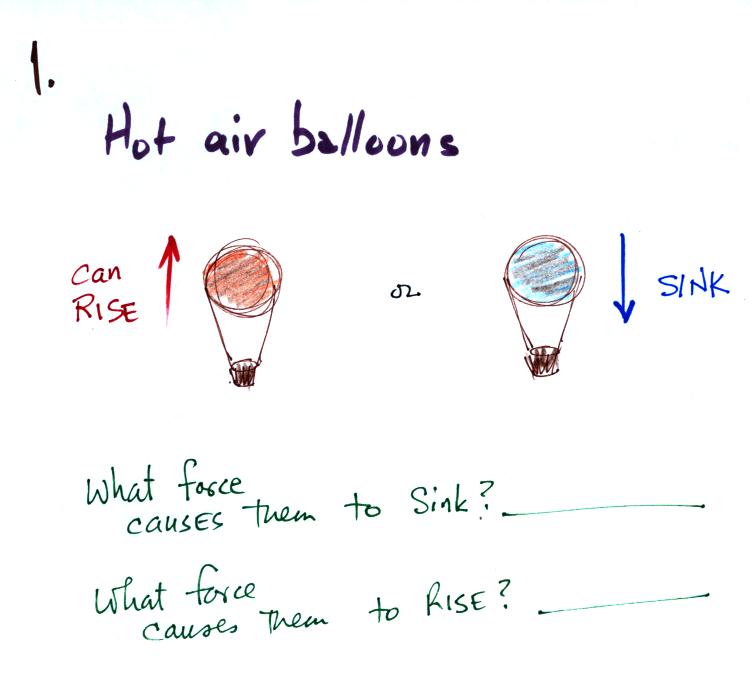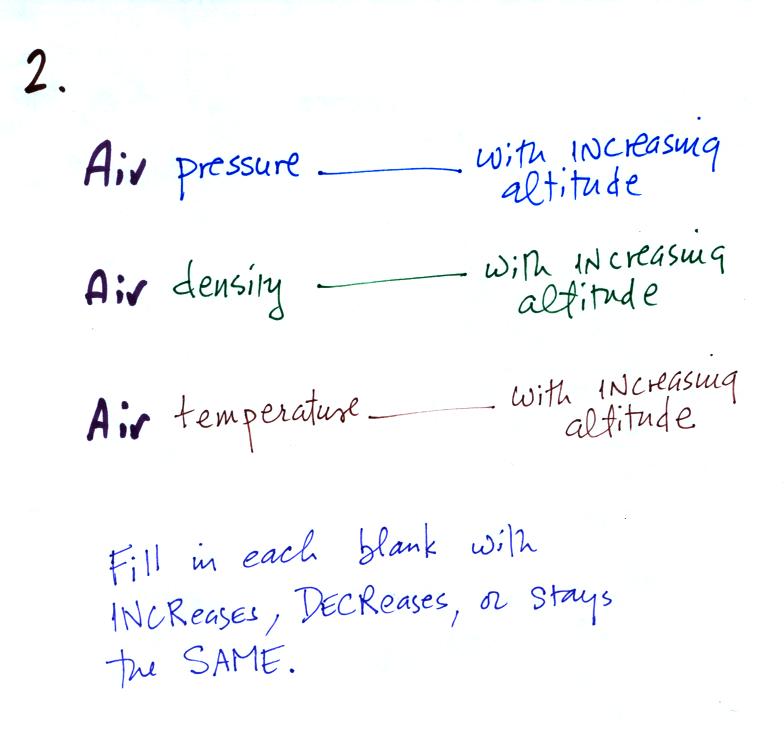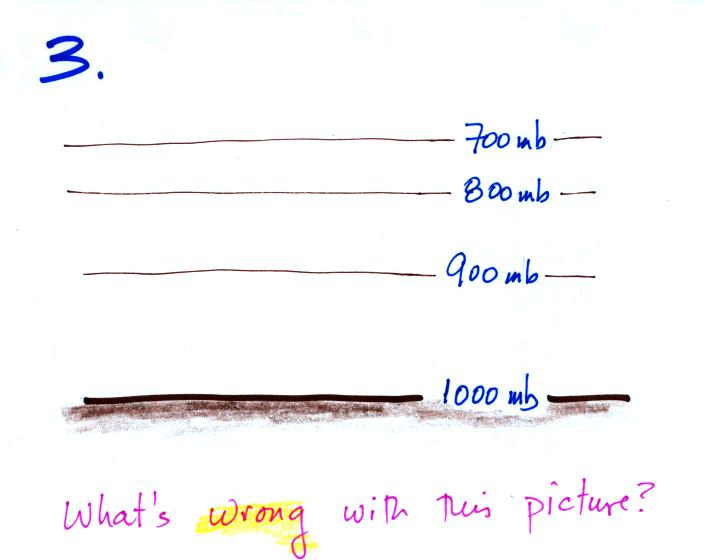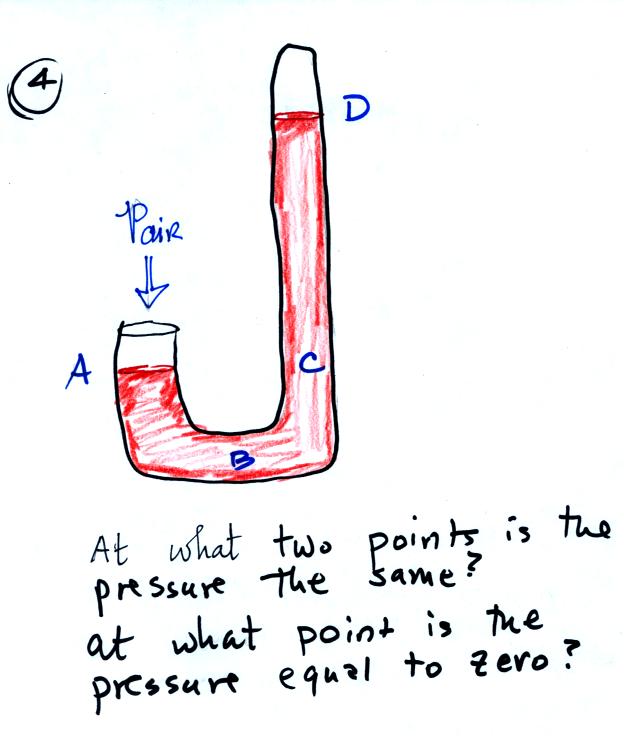Answers to the Jan. 31
In-Class Optional Assignment
Gravity will cause the balloon to sink. The pressure
difference force is an upward pointing force that can cause the balloon
to rise. The pressure from the air surrounding the balloon
decreases with altitude. The pressure pushing upward on the
bottom of the balloon is a little stronger than the pressure pushing
downward on the top of the balloon.
A lot of students mentioned air density. Hot balloons are filled
with low density air and doesn't weigh as much as balloons filled with
cold higher density air. The upward pressure difference force
ends up being stronger than gravity in the case of warm low density
balloons and they float upward. Gravity is stronger than the
pressure difference force with cold high density balloons and they sink.
We'll come back to this topic in class on Friday.
Air pressure and air density both decrease with increasing
altitude. Air temperature decreases with increasing altitude in
the troposphere (0 to 10 km altitude on average). In other parts
of the atmosphere, temperature can increase, decrease, and even remain
constant.
Pressure is correctly shown decreasing with increasing
altitude. The problem is with the thicknesses of the layers of
air. The thinnest layer, the densest air, should be on the bottom
of the picture. The bottom layer is compressed the most because
it must support the most weight, the weight of all the layers above.
The pressures at Points A & C are equal. This is the
balance portion of the barometer. The weight of a tall column of
air pushing down on A is balanced by a much shorter column of fluid
extending from C to D. In the case of a mercury barometer the
distance between C & D would be about 30 inches if the barometer
were at sea level.
The pressure is zero at Point D.
Pressure depends on the weight of the air overhead. Weight
depends on mass and gravity. So if gravity gets stronger the
weight of the atmosphere will increase even though the mass stays the
same. Some pressure will increase.
The reading on a mercury barometer will, however, stay the same.
A mercury barometer is basically a balance. You balance the
weight of a very tall column of air with a much shorter column of
mercury. If gravity increases in strength, the weight of the air
column will increase but so will the weight of the mercury
column.





